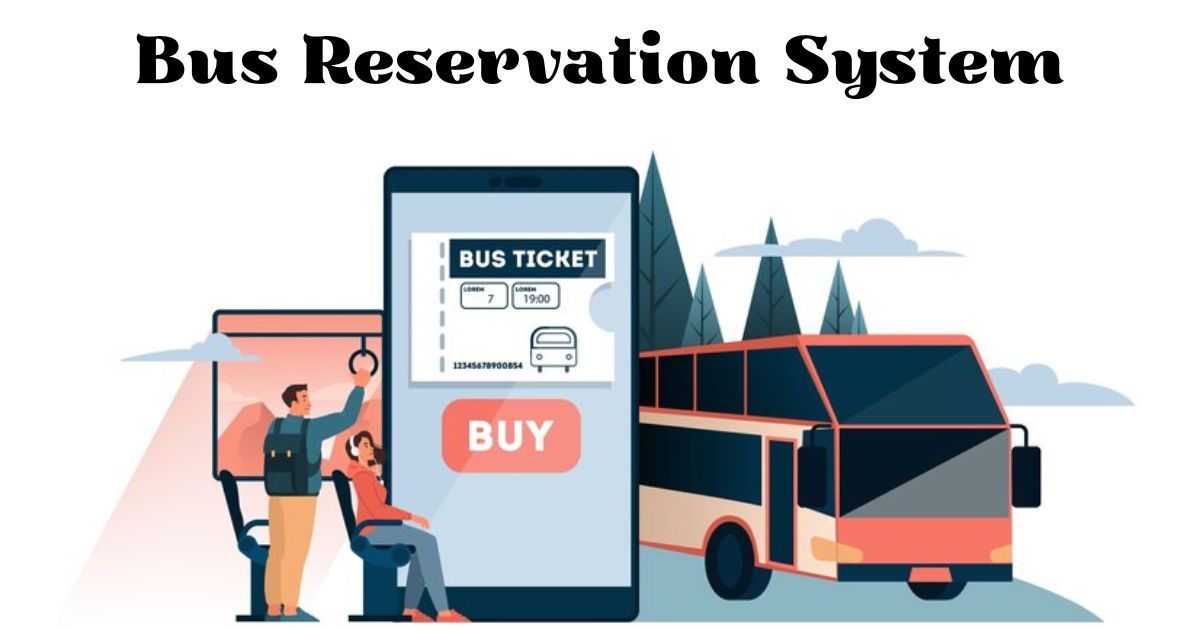
Today, convenience and efficiency have become non-negotiable. Whether it’s booking flights, ordering food, or securing a seat on a bus, customers expect seamless digital solutions that prioritize their needs. If you’re planning to launch a bus reservation system, understanding what drives exceptional user experience (UX) is the cornerstone of success. This guide will walk you through practical tips to ensure your platform stands out in the competitive market.
Why a User-Friendly Bus Reservation System Matters
Before diving into strategies, let’s establish why UX is vital. An online bus reservation system isn’t just a tool for booking—it’s a touchpoint where customers form their impressions about your service. A clunky interface or a slow booking process can lead to frustrated users and lost revenue. On the other hand, a sleek, intuitive, and responsive system can turn first-time users into loyal customers.
The stakes are even higher if you’re working with a white label bus reservation system or partnering with an on demand app development company. These solutions offer flexibility and scalability but require thoughtful customization to align with your brand and audience expectations.
Tips for Maximizing User Experience in a Bus Reservation System
1. Focus on Intuitive Design
Users need to navigate your platform effortlessly, whether on a desktop or a mobile device. Achieve this by:
- Simplifying Navigation: Use clear menus and easily recognizable icons to guide users through the booking process.
- Minimizing Steps: Reduce the number of clicks needed to complete a reservation. For instance, allow users to search for routes, select seats, and pay on a single page.
- Responsive Design: Ensure your system adapts seamlessly across devices. With the rising popularity of mobile apps, partnering with a mobile app development company can be a game-changer.
2. Offer Advanced Filtering Options
Not every user has the same preferences. Some may prioritize price, while others look for specific amenities. Enhance the booking experience with features like:
- Filter by bus type (AC, sleeper, semi-sleeper).
- Sort options based on departure times, travel duration, or reviews.
- Include toggles for additional preferences, such as Wi-Fi, charging ports, or meal services.
By catering to diverse needs, you ensure that your bus online reservation system appeals to a broader audience.
3. Enable Seamless Payment Integration
A common pain point in booking systems is the lack of reliable payment methods. To ensure user satisfaction:
- Integrate multiple payment options, including credit/debit cards, wallets, and UPI.
- Offer a secure gateway to build trust.
- Provide instant booking confirmation to reduce anxiety and enhance the user experience.
4. Leverage Personalization and Recommendations
Incorporate AI-driven personalization to make your system more engaging. Features like:
- Saved Preferences: Allow users to save their preferred seats, routes, or buses for quicker booking next time.
- Travel History: Offer tailored suggestions based on past journeys.
- Dynamic Offers: Showcase promotions for regular travelers, such as loyalty discounts or cashback deals.
Partnering with an on demand app development company can help you implement these advanced features effectively.
5. Prioritize Speed and Reliability
Nobody likes a slow app. Optimize your system for performance by:
- Choosing reliable servers to handle high traffic during peak times.
- Reducing page load times with optimized code.
- Ensuring 99.9% uptime to build trust and reliability.
This is especially critical for white label bus reservation systems, where your brand reputation is on the line.
6. Provide Real-Time Updates
Bus schedules can change, and customers need to stay informed. Real-time updates on your platform can include:
- Bus arrival and departure times.
- Notifications for delays or cancellations.
- GPS tracking lets users follow their bus in real-time.
These features not only enhance user experience but also reduce customer service inquiries.
7. Ensure Accessibility for All Users
An inclusive bus reservation system caters to everyone, including people with disabilities. Implement features like:
- Screen reader compatibility for visually impaired users.
- Text size adjustments for readability.
- Clear contrasts in UI design to accommodate colourblind individuals.
Accessibility isn’t just good UX; it’s also a smart business move that expands your customer base.
Collaborating with Experts for a Flawless System
Building a cutting-edge system often requires expertise beyond in-house capabilities. Collaborating with an on-demand app development company ensures your platform is built using the latest technologies and best practices.
Additionally, a white-label bus reservation system can provide the foundation for your platform while allowing customization to align with your brand. This option is ideal for companies looking to enter the market quickly without starting from scratch.
Testing and Iteration: The Key to Success
Even the best-designed systems need rigorous testing. Before launch, invest in:
- Beta Testing: Invite a small group of users to try out your platform and provide feedback.
- Load Testing: Simulate high-traffic conditions to identify and fix performance bottlenecks.
- Continuous Updates: Post-launch, monitor user feedback and iterate regularly to improve the experience.
Remember, the digital world evolves rapidly, and staying ahead means continuously enhancing your bus reservation system.
Conclusion
Launching a successful bus reservation system requires more than just functionality—it demands an unwavering focus on user experience. By prioritizing intuitive design, seamless payments, personalization, and accessibility, you can create a platform that resonates with modern travellers. Whether you’re building from scratch or using a white-label bus reservation system, the end goal is the same: making bus travel easier, faster, and more enjoyable for your users.
Need expert guidance to bring your vision to life? Consider partnering with a trusted mobile app development company to turn your ideas into reality. With the right tools, team, and mindset, your bus reservation platform could become the next big thing in travel tech.